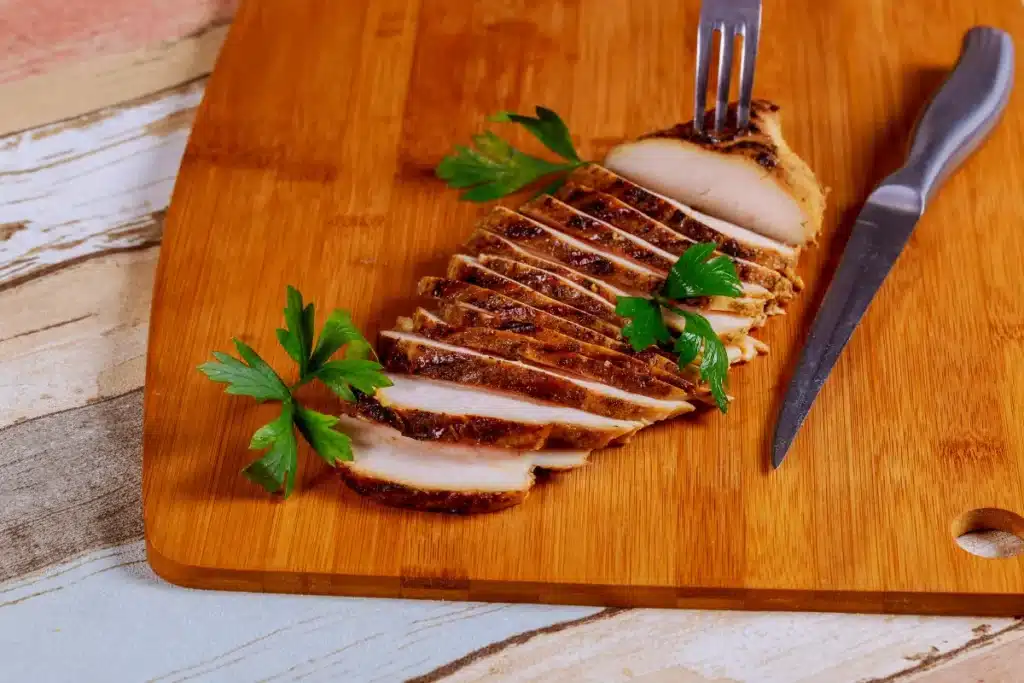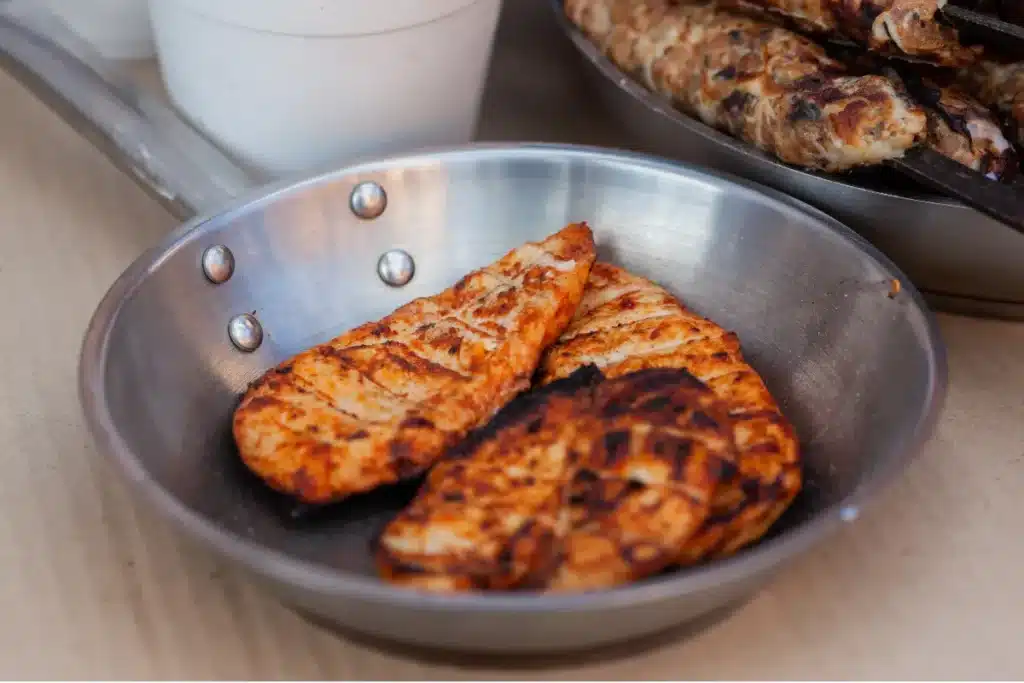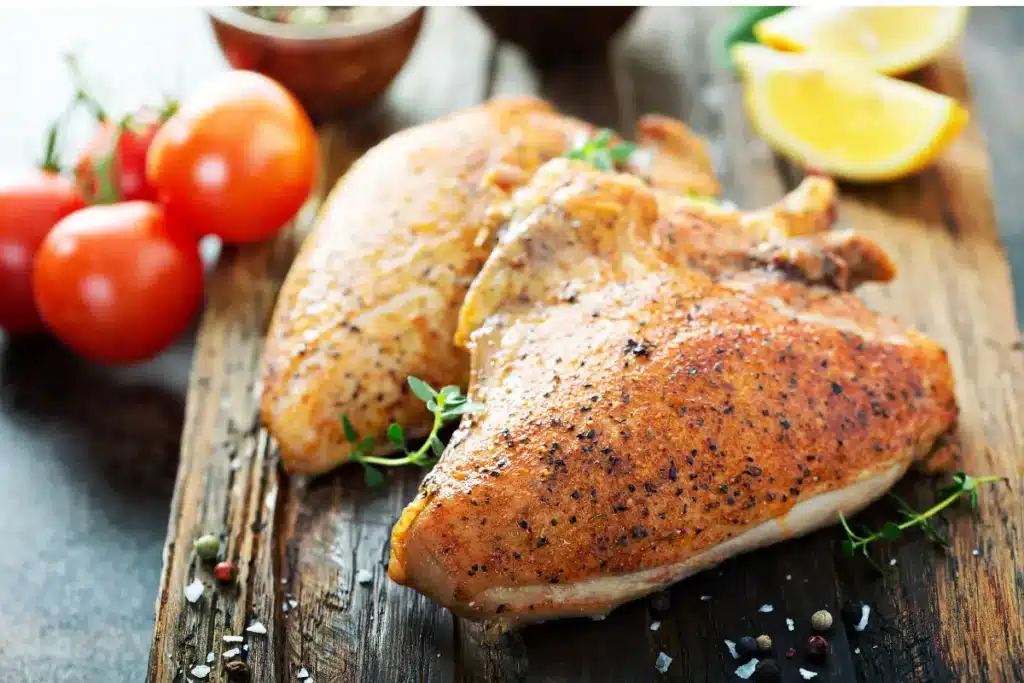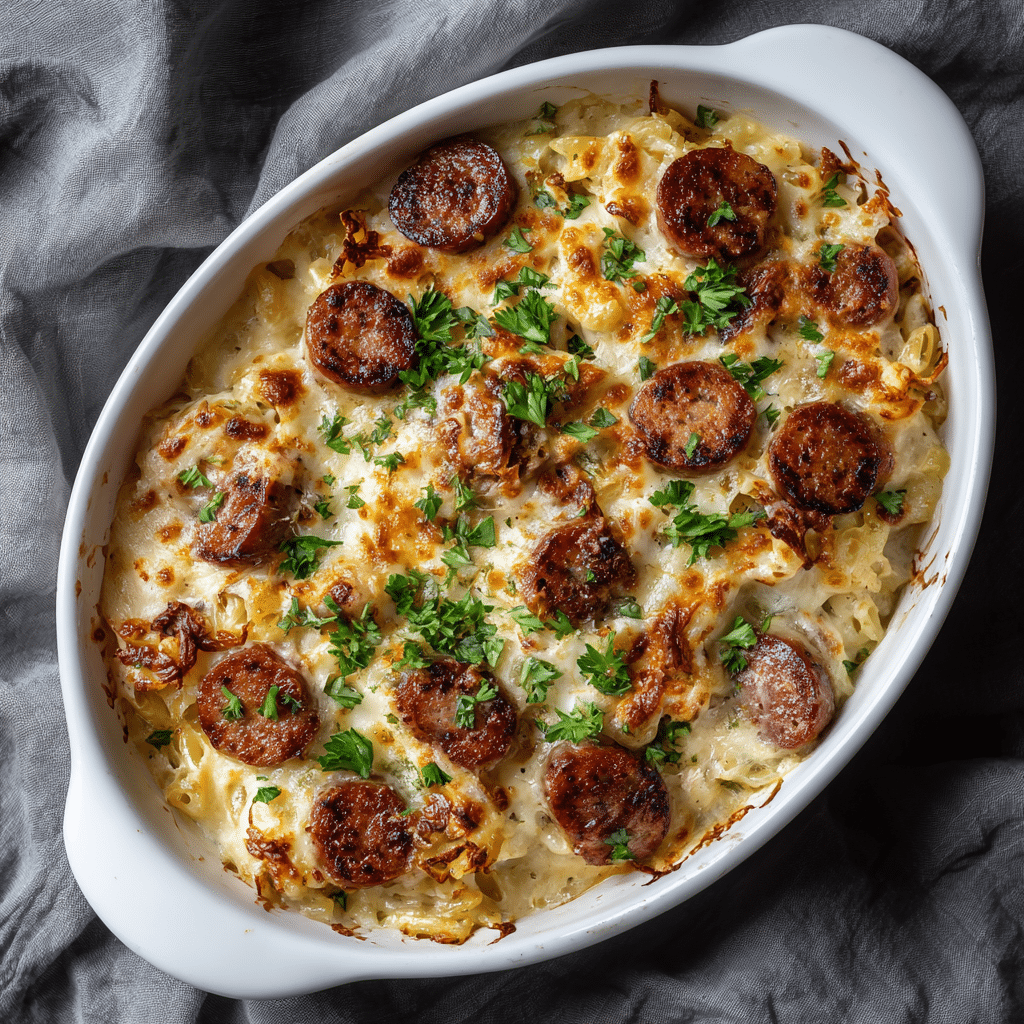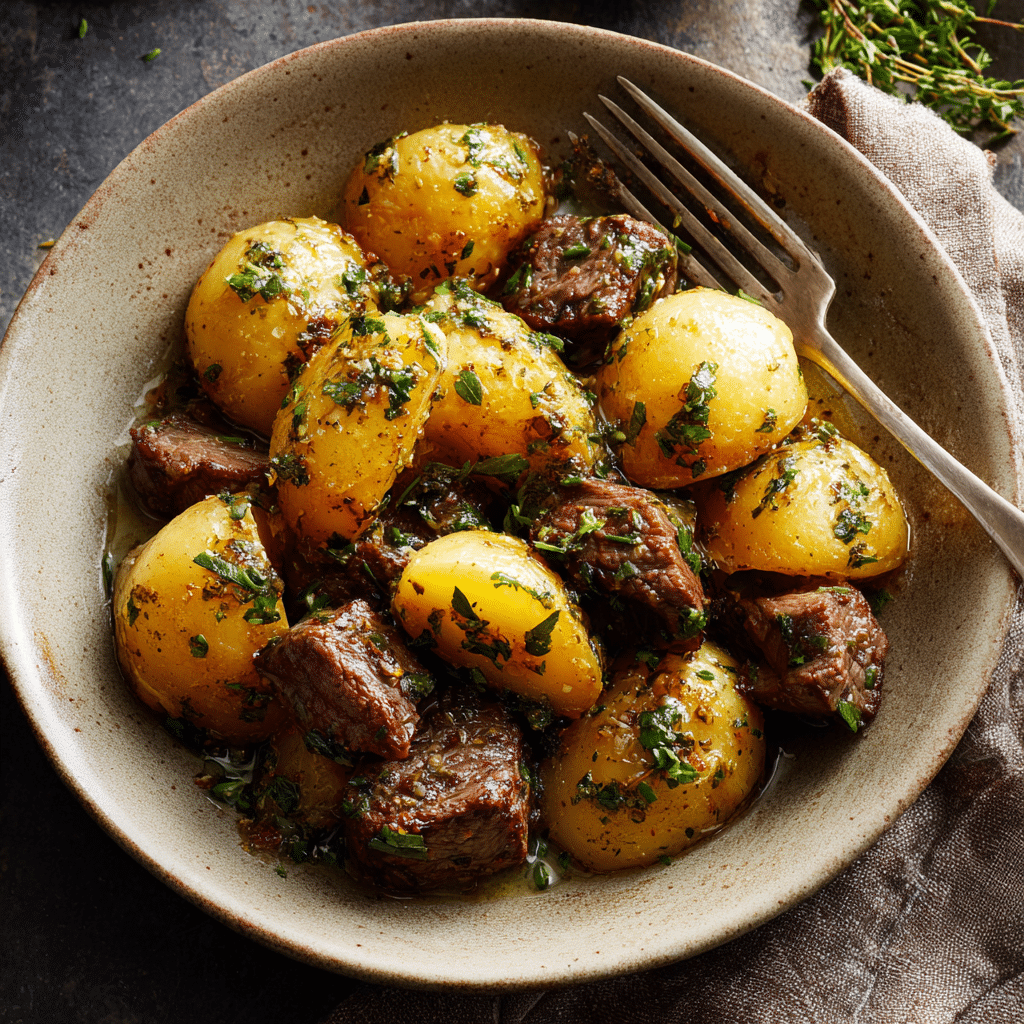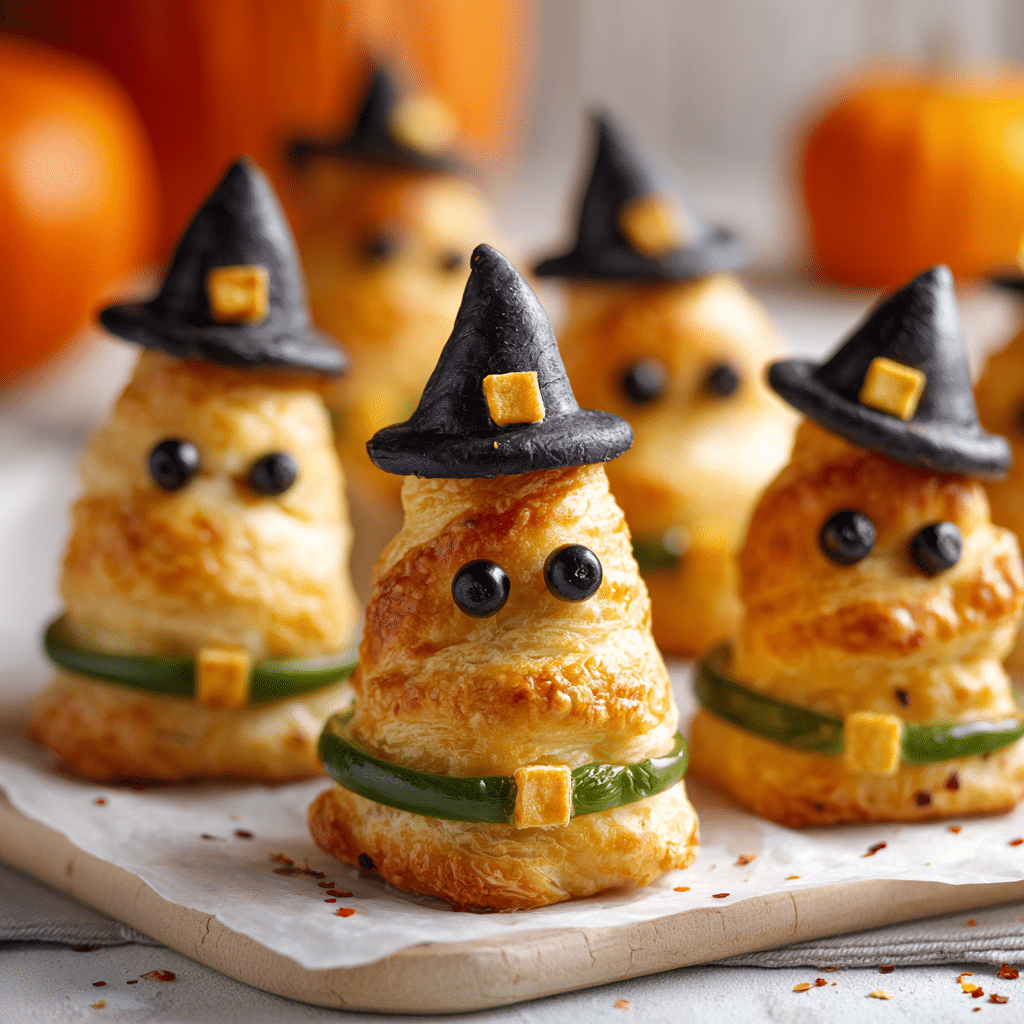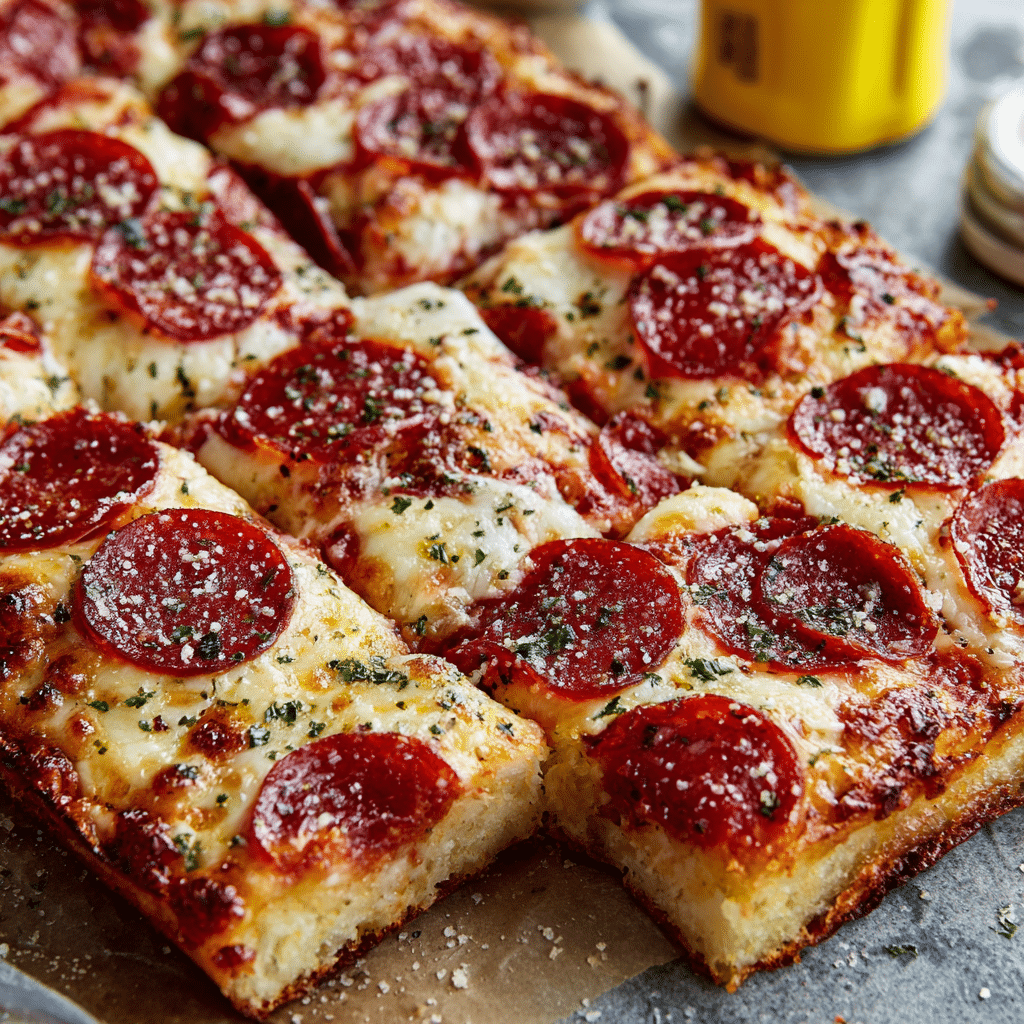Introduction to Smoked Chicken Breast Recipes: Unleashing Flavor
Firstly, smoked chicken breast is not just a dish; it’s an experience. The slow infusion of wood smoke into the tender meat of the chicken breast creates a flavor that’s both intricate and comforting. Whether you’re a barbecue aficionado or a home cook looking to explore new culinary territories, smoked chicken breast offers a versatile canvas for your gastronomic creativity.
Preparing Your Chicken: Essential Steps for Smoked Chicken Breast Success
Furthermore, preparing your chicken properly before cooking is crucial to ensure it’s both safe to eat and delicious. Here’s a comprehensive guide to help you prepare your chicken:
1. Thawing Techniques for Optimal Smoked Chicken Texture
If your chicken is frozen, it’s important to thaw it safely to prevent the growth of harmful bacteria.
- Refrigerator: Place the chicken in the refrigerator and allow it to thaw slowly. This can take several hours to a full day, depending on the size.
- Cold Water: Keep the chicken in a leak-proof package and submerge it in cold water. Change the water every 30 minutes. A pound of chicken might thaw in an hour or less, but larger quantities or whole chickens will take longer.
- Microwave: Use the defrost setting on your microwave. Cook the chicken immediately after thawing because some areas may begin to cook during the microwaving process.
2. Best Practices for Cleaning and Marinating Your Chicken Breast
- Wash Your Hands: Always wash your hands with soap and water before and after handling raw chicken.
- Do Not Wash the Chicken: Washing chicken can spread germs by splashing. The cooking process will kill any bacteria present.
- Clean Surfaces: After preparing your chicken, clean all surfaces and utensils with hot, soapy water or a disinfectant kitchen spray.
3. Preparing
- Remove Excess Fat: Trim off any excess fat with a clean knife. Some fat can be left on for flavor, depending on your preference.
- Pat Dry: If you need a drier surface for seasoning or cooking, pat the chicken dry with paper towels.
- Marinating: If you choose to marinate your chicken, do so in the refrigerator to keep it at a safe temperature. Never reuse marinade that has been in contact with raw chicken unless it’s boiled first.
4. Safe Cooking Temperatures
- Use a Food Thermometer: Always use a food thermometer to ensure your chicken has reached a safe internal temperature of 165°F (74°C) to kill harmful bacteria.
- Let It Rest: Let your chicken rest for a few minutes after cooking before cutting into it. This allows the juices to redistribute, making your chicken more tender.
5. Storage
- Refrigerate Leftovers: Cool leftovers as quickly as possible (within 2 hours of cooking) and store them in the refrigerator. Use cooked chicken within 3-4 days.
- Freeze If Necessary: You can freeze cooked chicken for longer storage. Use within 2-6 months for best quality.
By following these steps, you can prepare your chicken safely and enjoyably. Whether you’re grilling, baking, frying, or roasting, starting with properly prepared chicken is key to delicious and safe meals.
Crafting the Perfect Smoky Rub: A Key to Flavorful Smoked Chicken Breast Recipes
Crafting the perfect smoky rub involves a careful balance of flavors that add depth, warmth, and a touch of heat to your dishes, creating a complex taste profile that enhances meats and vegetables alike. Here’s a guide to creating such a rub, focusing on the types of flavors and components without specifying exact ingredients:
Flavor Profiles:
- Smokiness: The foundation of the rub, providing a rich, deep flavor that mimics the essence of being cooked over an open fire. Think of using spices that are naturally smoky or that have been smoked.
- Savory: Essential for grounding the rub, adding depth and complexity. This can come from ground seeds or dried herbs known for their earthy, robust flavors.
- Sweetness: Balances the heat and smokiness, encouraging caramelization and adding a glossy, appealing finish to the cooked surface. Consider a natural, granulated component that melts under heat.
- Heat: A necessary kick that elevates the rub, making it more dynamic. A range of spices can introduce varying levels of spiciness, from a gentle warmth to a more intense heat.
- Saltiness: Critical for enhancing all other flavors, making them more pronounced and balanced. Coarse or flaked varieties can also add texture.
- Tanginess: Adds a bright note that cuts through the richness, offering a counterpoint to the smokiness and sweetness. Think of a powdered form of something typically sour or tangy.
Crafting Your Rub:
- Balance Your Base: Start with equal parts of smoky and savory components. This creates a solid foundation for your rub.
- Adjust Sweetness and Heat: Add the sweet component sparingly at first, then adjust according to taste. Similarly, introduce the heat gradually, tasting as you go to ensure it complements rather than overwhelms the other flavors.
- Incorporate Salt and Tang: Mix in the salty element to enhance the overall flavor profile. Then, add a touch of tanginess to brighten and lift the flavors, ensuring it doesn’t overpower the other components.
Tips for Use:
- Application: Apply the rub generously to the surface of your meat or vegetables, pressing it in to adhere well. For deeper flavor infusion, let the rub sit on the food, covered in the refrigerator, for several hours or overnight before cooking.
- Cooking: Use cooking methods that can handle the robustness of the rub, such as grilling, smoking, or roasting, to achieve a beautifully caramelized exterior.
- Storage: Store any leftover rub in an airtight container in a cool, dry place. It can last for several months, ready to be used for your next culinary adventure.
This approach allows you to create a customized smoky rub that perfectly suits your taste preferences and the dishes you plan to prepare, making each meal uniquely delicious.
Essential Smoking Techniques and Tools for Chicken Recipes
In the realm of cooking and culinary arts, smoking serves as a method to flavor, cook, or preserve food through exposure to smoke from burning or smoldering materials, typically wood. A variety of wood types, such as hickory, maple, cherry, and apple, are utilized, each bestowing a unique flavor upon the food. This versatile cooking method finds application across an array of foods, including meats, fish, cheese, and vegetables
Smoking Techniques
- Cold Smoking: This method smokes the food at a temperature that does not cook the food but imparts a smoky flavor. It’s typically done at temperatures between 20°C to 30°C (68°F to 86°F). Foods like cheese, salmon, and some sausages are cold-smoked.
- Hot Smoking: In hot smoking, foods are both flavored by the smoke and cooked. Temperatures range from 52°C to 80°C (126°F to 176°F). It is commonly used for meats and fish, producing a tender and flavorful product.
- Smoke Roasting or Barbecuing: This involves cooking the food at higher temperatures, like in a traditional oven or barbecue but with smoke involved to add flavor. It’s a popular method for ribs, pork shoulder, and brisket.
Smoking Tools and Equipment
- Traditional Smokers: These can range from simple setups like drum smokers to more complex offset smokers, where the smoke is generated in a firebox attached to the side of the main cooking chamber.
- Electric and Gas Smokers: These smokers are easier to control and maintain the desired temperature. Electric smokers use heating elements to produce the heat, while gas smokers use propane. Both types often have a pan for wood chips to generate smoke.
- Pellet Smokers: These smokers use wood pellets made from compressed sawdust for both heat and smoke. They are known for their ease of use and the ability to precisely control the temperature through electronic controls.
- Handheld Smokers: These are small, portable devices that can add a smoky flavor to food and drinks without the need for a full smoking setup. They are great for cold smoking small items or adding a finishing touch to cocktails and other dishes.
- Smoking Boxes and Pouches: For those who do not have a dedicated smoker, smoking boxes or pouches can be used on a standard grill. These containers hold wood chips and are placed directly on the grill, producing smoke as they heat up.
Considerations for Smoking
- Wood Choice: The type of wood used greatly affects the flavor of the finished product. Different woods are suited to different types of food.
- Temperature Control: Maintaining the correct temperature is crucial for both safety and achieving the desired flavor and texture in the food.
- Ventilation: Proper airflow is necessary to control the smoke density and temperature inside the smoker.
Smoking food is both an art and a science, requiring practice and patience to perfect. It’s a traditional method that has seen a resurgence in popularity, offering a depth of flavor that is difficult to achieve through other cooking methods.
The Art of Smoking Chicken Breast: A Comprehensive Guide
The smoking process is a time-honored culinary technique used to flavor, cook, and preserve food, most commonly meats and fish, but it can also be applied to vegetables, cheeses, and even beverages. Smoking imparts a distinctive taste, often described as smoky, which varies depending on the type of wood used, the smoking temperature, and the duration of smoking. Here’s an overview of the smoking process, including different methods and key considerations:
Types of Smoking:
- Cold Smoking: This method involves smoking food at temperatures between 68°F and 86°F (20°C and 30°C). Cold smoking does not cook the food; it imparts flavor and helps preserve it. Cold smoking is suitable for foods like cheese, salmon, and some sausages, and can take from a few hours to several days.
- Hot Smoking: Hot smoking cooks the food while it smokes, with temperatures ranging from 126°F to 176°F (52°C to 80°C). This method is commonly used for meats and fish, imparting a smoky flavor while ensuring the food is safe to eat. The cooking time can vary from an hour to several hours, depending on the size and type of food.
- Smoke Roasting (or Barbecuing): Essentially a form of hot smoking, smoke roasting uses higher temperatures, similar to baking or roasting, to cook and smoke the food simultaneously. This method is popular for larger cuts of meat and poultry and results in a smoky flavor combined with a roasted texture.
Wood Types and Flavors:
The type of wood used in smoking plays a significant role in the flavor of the finished product. Hardwoods are preferred, as softwoods contain resins that can impart an unpleasant taste. Common woods include:
- Hickory: Imparts a strong, bacon-like flavor. Good for pork and ribs.
- Oak: A versatile wood with a medium to strong flavor. Great for beef or lamb.
- Maple: Provides a sweet and subtle flavor, suitable for poultry and ham.
- Apple: Gives a sweet and fruity smoke, ideal for poultry and pork.
- Cherry: Offers a mild and fruity flavor, excellent for all meats. Different woods can be mixed to create unique flavor profiles.
Smoking Process Steps:
- Preparation: Start by choosing and preparing your food. Some meats may require brining or seasoning before smoking.
- Choosing Wood: Select the type of wood chips or chunks based on the desired flavor outcome.
- Preheating the Smoker: Whether using a traditional smoker, a charcoal grill, or an electric smoker, it’s important to preheat it to the target temperature before adding the food.
- Smoking: Place the food in the smoker, ensuring it’s not overcrowded to allow smoke to circulate evenly. Monitor the temperature and smoke level, adding wood as needed to maintain both.
- Monitoring: Depending on the smoking method, keep an eye on the internal temperature of the food, especially if hot smoking, to ensure it’s cooked through but not overdone.
- Resting: Once smoked, let the food rest for a period to allow the juices to redistribute. This step is crucial for ensuring moist and tender meat.
Key Considerations:
- Temperature Control: Maintaining the correct temperature is crucial for both safety and flavor.
- Ventilation: Proper airflow is necessary to control the smoke density and temperature.
- Patience: Smoking is a slow process that cannot be rushed. The low and slow approach yields the best results.
Smoking adds depth and complexity to the flavor of foods, making it a beloved technique among culinary enthusiasts. Whether you’re a novice or an experienced smoker, experimenting with different foods, woods, and smoking times can lead to delicious discoveries.
Mastering Internal Temperature for Perfect Smoked Chicken
Mastering the internal temperature of food is a critical aspect of cooking, ensuring that dishes are not only delicious but also safe to eat. Different foods require different internal temperatures to be considered properly cooked, according to food safety standards. Here’s a guide to understanding and mastering the internal temperature for a variety of foods.
Meat
- Beef, Pork, Lamb, and Veal
- Steaks, chops, and roasts: The USDA recommends cooking these cuts to a minimum internal temperature of 145°F (63°C), followed by a rest time of at least 3 minutes.
- Ground meat: Ground beef, pork, lamb, and veal should be cooked to an internal temperature of 160°F (71°C).
- Poultry (Chicken, Turkey, Duck)
- Whole birds, parts, and ground poultry: The safe cooking temperature is at least 165°F (74°C). This ensures that harmful bacteria are destroyed.
Seafood
- Fish: Most fish should be cooked to an internal temperature of 145°F (63°C). Fish is typically done when it separates into flakes and appears opaque throughout.
- Shellfish: Shrimp, lobster, and crabs turn red and the flesh becomes pearly opaque when cooked properly. Scallops should appear milky white or opaque and firm.
Eggs and Egg Dishes
- Eggs: Cook until both the yolk and white are firm. Egg dishes, such as casseroles, should be cooked to an internal temperature of 160°F (71°C).
Others
- Casseroles and Leftovers: These should be reheated to at least 165°F (74°C).
- Hot Dogs and Luncheon Meats: While pre-cooked, it’s recommended to reheat these to 165°F (74°C) if serving to people with a higher risk of foodborne illness.
Tools for Measuring Internal Temperature
- Instant-Read Thermometers: These thermometers provide a quick and accurate reading of the internal temperature. They can be digital or dial-based.
- Probe Thermometers: Designed to remain in the food while it cooks, these are ideal for monitoring large cuts of meat or poultry in the oven.
- Infrared Thermometers: These measure the surface temperature of food and are less commonly used for checking doneness but useful for getting quick surface readings.
Tips for Mastering Internal Temperature
- Location: Insert the thermometer into the thickest part of the food, away from bone, fat, or gristle, to get the most accurate reading.
- Rest Time: Understand that the internal temperature of meat can continue to rise slightly after it’s removed from the heat source due to residual heat, known as “carryover cooking.”
- Regular Calibration: Ensure your thermometer is accurate by regularly calibrating it according to the manufacturer’s instructions.
- Safety First: Always prioritize food safety. Even if you prefer meat that’s less cooked, it’s important to understand the risks associated with consuming undercooked meats, especially for vulnerable populations.
Mastering the internal temperature of food not only enhances the flavor and texture of your dishes but also ensures they are safe to consume. With practice and the right tools, you can achieve consistent, delicious results while adhering to food safety standards.
Elevating Your Meals: Serving and Presentation Tips
Serving and presentation are crucial aspects of the culinary experience, transforming a simple meal into a memorable feast for the senses. The way a dish is served and presented can greatly influence the diner’s perception of its taste and quality. Here are some tips and ideas for elevating your serving and presentation skills:
1. Choose the Right Dishware
- Complement the Cuisine: Select dishware that complements the style of your cuisine. Rustic dishes can be served on earthenware, while contemporary dishes might look best on sleek, modern plates.
- Contrast Colors: Use plates that contrast with your food for visual appeal. Dark dishes can make light-colored foods pop, and vice versa.
2. Play with Textures
- Variety: Incorporate a variety of textures on the plate to engage the senses. A crunchy element alongside something smooth or creamy can add interest.
- Layering: Layer your ingredients to build height and depth. This can be as simple as stacking components or using tools like ring molds for precision.
3. Use Color Wisely
- Color Palette: Think of your plate as a canvas. Use ingredients with different colors to create a vibrant and appealing presentation.
- Garnishes: Fresh herbs, edible flowers, or a sprinkle of spices can add a pop of color and enhance the flavor.
4. Consider Composition
- Rule of Thirds: Visually divide your plate into thirds and place the main component in one section, with the others complementing it. This creates balance and visual interest.
- Negative Space: Don’t feel the need to fill every inch of the plate. Strategic use of negative space can make a dish look more elegant and intentional.
5. Highlight the Main Ingredient
- Focus: Make sure the main ingredient of your dish is the star. Arrange other elements around it in a way that complements and highlights its qualities.
- Sauce Application: Instead of drowning the dish in sauce, consider drizzling it around the plate or underneath the main ingredient for a cleaner presentation.
- Sauces: A good sauce can make a great smoked chicken breast unforgettable. For a classic touch, try this Homemade BBQ Sauce recipe.
6. Temperature and Timing
- Serve Immediately: To ensure the best texture and temperature, serve dishes immediately after plating.
- Preheat Plates: Warm plates for hot dishes and chill plates for cold dishes to keep food at the optimal temperature longer.
7. Personal Touch
- Signature Style: Develop your own signature style of presentation that reflects your personality or the theme of your meal.
- Attention to Detail: Even the smallest detail can elevate a dish, such as a precisely placed garnish or an artistically drizzled sauce.
8. Practice and Experiment
- Experiment: Don’t be afraid to try new ideas. Not every attempt will be perfect, but practice will help you develop your presentation skills.
- Inspiration: Look to professional chefs, cooking shows, and food magazines for presentation ideas and techniques.
Remember, the goal of good presentation is not just to make food look attractive, but also to enhance the overall dining experience. By applying these tips with care and creativity, you can turn even the simplest meal into a work of art that delights all the senses.
Ultimate Smoked Chicken Breast Recipe: A Step-by-Step Guide
Smoking chicken breast is a fantastic way to infuse the meat with a delicious smoky flavor while keeping it juicy and tender. Here’s a simple recipe to make smoked chicken breasts that are sure to impress.
Ingredient List for the Ultimate Smoked Chicken Breast
- 2 boneless, skinless chicken breasts
- 2 tablespoons olive oil
- 2 teaspoons salt
- 1 teaspoon black pepper
- 1 teaspoon garlic powder
- 1 teaspoon onion powder
- 1 teaspoon smoked paprika
- 1/2 teaspoon dried thyme
- Wood chips for smoking (hickory, apple, or cherry wood work well)
Equipment
- Smoker
- Meat thermometer
Instructions
- Preparation:
- Preheat your smoker to 225°F (107°C). While it’s heating, soak your wood chips in water if required by your smoker’s instructions.
- Rinse the chicken breasts and pat them dry with paper towels. This helps the seasoning stick better.
- Season the Chicken:
- In a small bowl, mix together the salt, black pepper, garlic powder, onion powder, smoked paprika, and dried thyme.
- Rub the chicken breasts with olive oil, then coat them evenly with the seasoning mix. Ensure all sides are covered for the best flavor.
- Smoking:
- Once your smoker is at the right temperature, place the chicken breasts on the grill grate. If your smoker uses a water pan, fill it as directed to help maintain moisture during the cooking process.
- Add the wood chips to your smoker. The type of wood used can vary depending on the flavor you prefer. Hickory, apple, and cherry woods are great choices for chicken.
- Close the smoker lid and let the chicken cook until the internal temperature reaches 165°F (74°C). This usually takes about 1 to 1.5 hours, but it’s important to use a meat thermometer to ensure accuracy.
- Resting:
- Once the chicken breasts reach the correct internal temperature, remove them from the smoker.
- Let them rest for about 5 to 10 minutes before slicing. Resting allows the juices to redistribute throughout the meat, making it juicier and more flavorful.
- Serving:
- Slice the chicken breasts and serve them as desired. They can be enjoyed on their own, sliced over salads, or shredded for sandwiches or wraps.
Additional Tips
- Marinating: For even more flavor, consider marinating the chicken breasts for a few hours or overnight before smoking. A simple marinade of olive oil, lemon juice, garlic, and herbs can elevate the taste.
- Smoking Temperature: Maintaining a consistent temperature in your smoker is key to cooking the chicken perfectly. Avoid opening the smoker frequently to check on the chicken, as this can cause significant heat loss.
- Wood Chips: Experiment with different types of wood chips to find the flavor profile you like best. Each type of wood imparts a unique taste to the meat.
Smoked chicken breasts are versatile and can be adapted with different seasonings and woods to match your flavor preferences. Enjoy the process of smoking and the delicious results!
Exploring the Health Benefits of Smoked Chicken Breast
Smoked chicken breast, when prepared and consumed in moderation as part of a balanced diet, offers several health benefits. This lean protein source is not only flavorful but also packs a nutritional punch. Here are some of the key health benefits of smoked chicken breast:
1. Protein and Nutrient Profile of Smoked Chicken Breast
- Muscle Maintenance and Growth: Chicken breast is an excellent source of high-quality protein, essential for muscle maintenance and growth. This makes it a popular choice among athletes and individuals looking to increase muscle mass or maintain muscle health.
- Satiety and Weight Management: The high protein content can also help you feel full longer, which may aid in weight management by reducing the overall calorie intake.
2. Integrating Smoked Chicken Breast into a Balanced Diet
- Lean Protein Source: Compared to other cuts of chicken and different types of meat, chicken breast is lower in fat and calories, making it a healthier choice for those monitoring their fat intake or looking to lose weight.
- Healthy Cooking Method: Smoking the chicken without adding extra fat or oils can keep the calorie count down while still infusing the meat with rich flavors.
3. Rich in Vitamins and Minerals
- Niacin (Vitamin B3): Helps convert food into energy and is important for the health of your nervous system, digestive system, and skin.
- Vitamin B6: Plays a vital role in mood regulation, brain health, and the creation of red blood cells.
- Phosphorus: Essential for strong bones and teeth, as well as maintaining kidney, liver, and central nervous system functions.
- Selenium: A powerful antioxidant that helps to protect the body from damage caused by free radicals and supports immune system function.
4. Low in Sodium
- Healthier Preparation: If you choose to smoke the chicken breast at home and control the amount of added salt, it can be a low-sodium option, beneficial for individuals with high blood pressure or those looking to reduce sodium intake.
5. Versatility in Healthy Diets
- Adaptable to Various Diets: Smoked chicken breast can be easily incorporated into a variety of dietary patterns, including low-carb, ketogenic, Paleo, and Mediterranean diets, thanks to its high protein and low carbohydrate content.
Considerations
While smoked chicken breast offers numerous health benefits, it’s important to consume it in moderation due to potential health risks associated with smoked meats:
- Polycyclic Aromatic Hydrocarbons (PAHs): Smoked meats contain PAHs, compounds that can form during the smoking process and are considered carcinogenic. Limiting consumption and not overindulging in smoked meats is advisable to minimize health risks.
- Balanced Diet: Incorporate a variety of protein sources and a wide range of fruits, vegetables, whole grains, and healthy fats into your diet to ensure a balanced nutritional intake.
In summary, smoked chicken breast is a nutritious, protein-rich food choice that can offer several health benefits when consumed as part of a varied and balanced diet. Its versatility and delicious flavor make it a valuable addition to many healthy meals.
Wrapping Up: The Joy of Smoked Chicken Breast Recipes
In summary, mastering the art of smoking and presenting foods like chicken breast enhances both the flavor and visual appeal of meals, contributing to a richer dining experience. While smoked chicken breast offers notable health benefits due to its high protein content and essential nutrients, moderation is key due to the potential health risks associated with smoked meats. Understanding these elements allows for informed culinary choices, aligning with both taste preferences and nutritional goals for a balanced diet.
FAQs: Expert Answers to Your Smoked Chicken Breast Recipe Questions
How Long to Smoke Chicken Breasts at 225°F
- It typically takes about 1 to 1.5 hours to smoke chicken breasts at 225°F until they reach an internal temperature of 165°F (74°C), which is the safe minimum internal temperature for chicken according to food safety guidelines. However, the exact time can vary based on the size and thickness of the chicken breasts, as well as the specific smoker being used. Using a meat thermometer to check the internal temperature is the best way to ensure doneness without overcooking.
Keeping Chicken Breast Moist When Smoking
- Brine Before Smoking: Soaking the chicken in a brine (a solution of water and salt, sometimes with sugar and other seasonings added) for a few hours or overnight before smoking can significantly increase moisture retention. The salt in the brine helps the meat absorb water and seasonings, leading to juicier and more flavorful chicken.
- Avoid Overcooking: Use a meat thermometer to ensure you remove the chicken from the smoker as soon as it reaches the safe internal temperature of 165°F (74°C). Overcooking can dry out the meat.
- Let it Rest: Allow the smoked chicken breasts to rest for 5 to 10 minutes after removing them from the smoker. This resting period lets the juices redistribute throughout the meat, enhancing juiciness.
- Use a Water Pan: Placing a water pan in the smoker can help maintain humidity during the smoking process, which helps keep the chicken moist.
Healthiness of Smoked Chicken Breast
Smoked chicken breast is a healthy option, especially when compared to red meats. It’s high in protein and low in fat, particularly if you remove the skin. However, consuming smoked meats frequently can be a concern due to the presence of polycyclic aromatic hydrocarbons (PAHs), which are formed during the smoking process and are considered carcinogenic. Moderation is key, as well as using proper smoking techniques to minimize the formation of PAHs, such as avoiding direct exposure of the meat to open flames and smoke.
Smoking Chicken Without Drying It Out
- Prevent Overcooking: The most crucial factor is not to overcook the chicken. Use a meat thermometer to ensure perfect doneness.
- Brining: As mentioned, brining the chicken before smoking can help retain moisture.
- Lower Smoking Temperature: Smoking at a lower temperature (like 225°F) allows the chicken to cook more evenly and retain moisture.
- Avoid Frequent Lid Opening: Keep the smoker closed as much as possible to maintain a consistent temperature and humidity level.
- Choose the Right Wood: Using wood that complements chicken, like apple, cherry, or hickory, can enhance flavor without needing to overcook the meat in search of flavor.
By following these guidelines, you can enjoy moist, flavorful, and healthier smoked chicken breasts without drying them out.
